Southern
"The Tennessean"
The Equipment
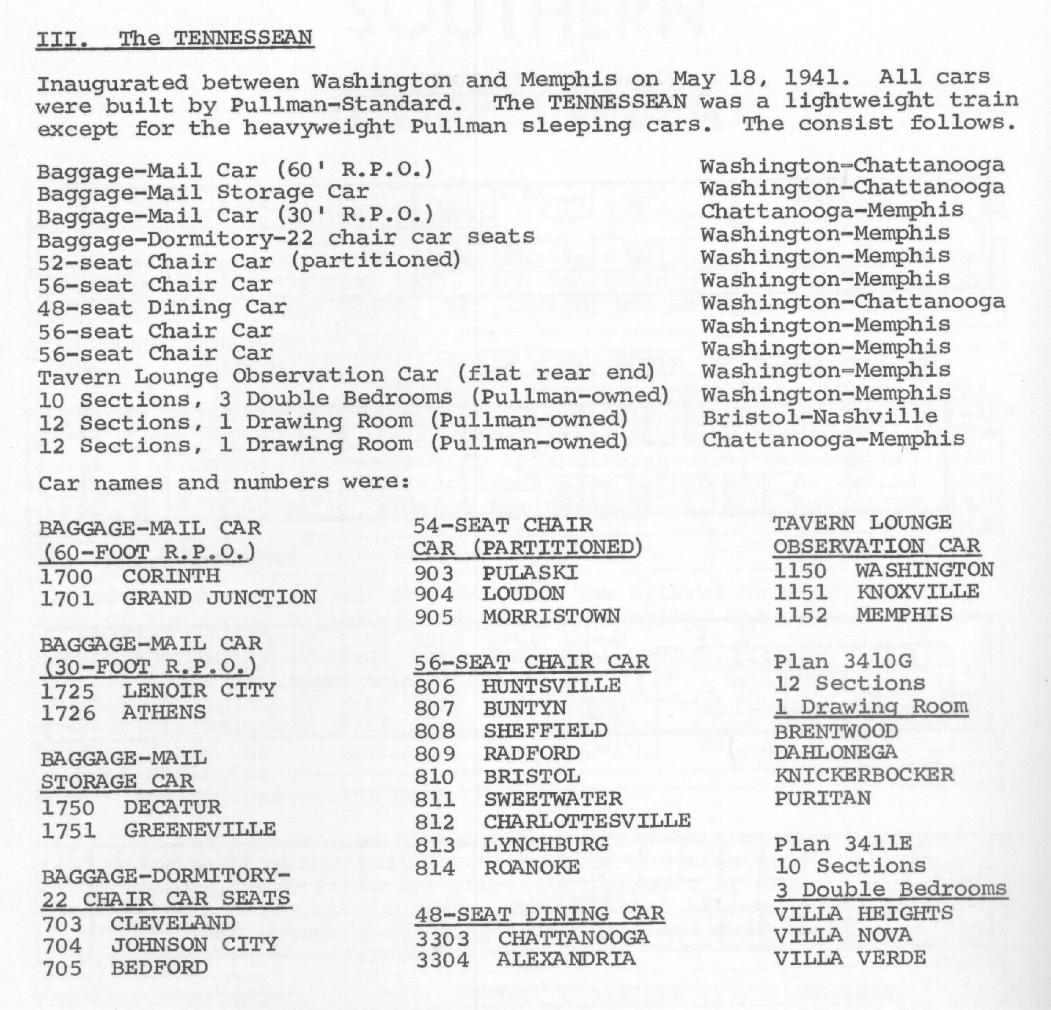 |
Phil Gosney Collection |
Initial train consist. Taken from publication "Car Names, Numbers and Consists" Published by Robert Wayner in 1972. |
Car assignments for The Tennessean from 1941-1966
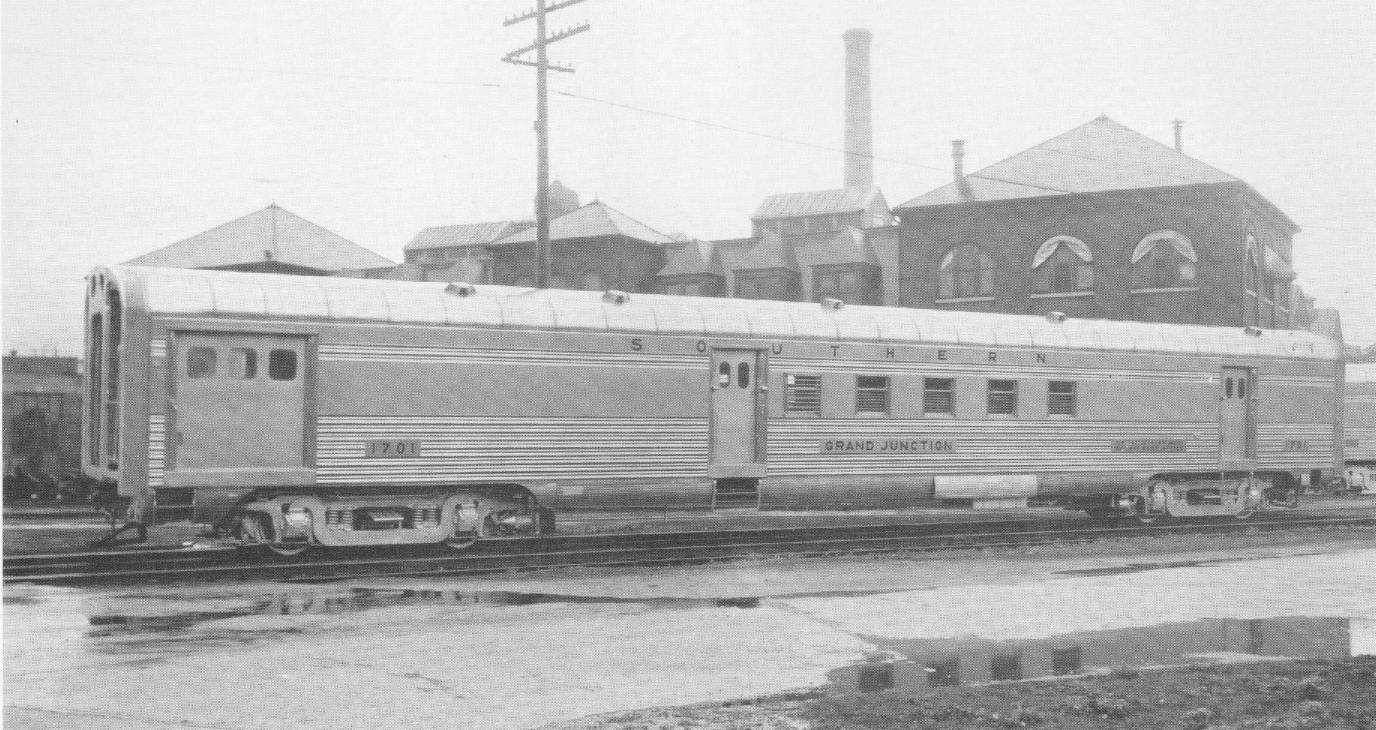 |
Phil Gosney Collection |
Pullman Standard builders photo of named Baggage-Mail car "Grand Junction" |
 |
Phil Gosney Collection |
Pullman Standard builders photo of 52 seat Partitioned Coach (Segregated) "South Carolina".
This was a 4 vestibule car with section for Negro passengers on "The
Southerner" train. Three identical cars named: "Pulaski", "Loudon"
and "Morristown" were the cars used on "The Tennessean". |
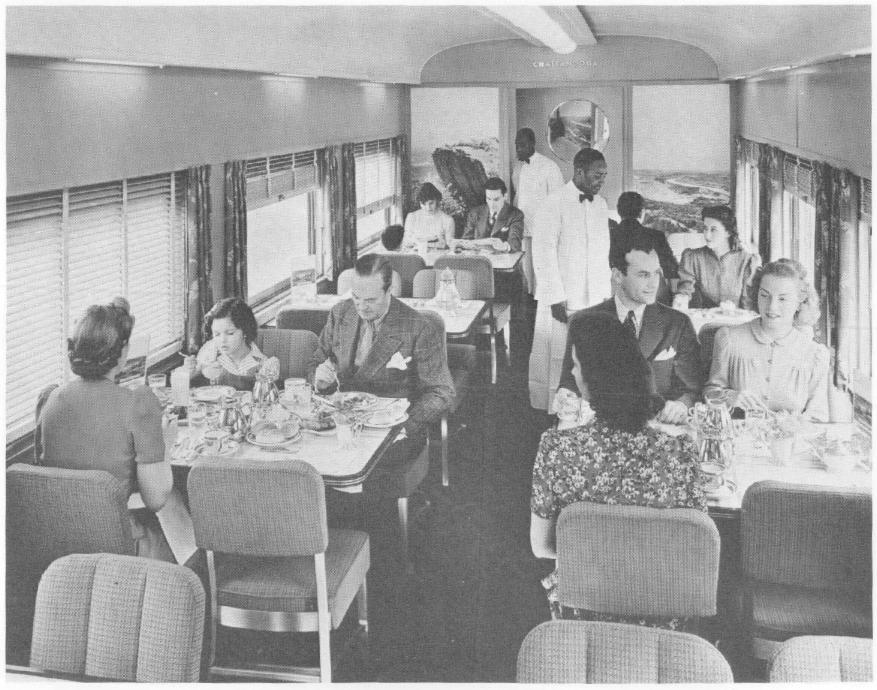 |
Phil Gosney Collection |
Pullman Standard builders photo of Dining Car "Chattanooga". Note name of car on upper bulkhead. |
 |
Phil Gosney Collection |
Pullman Standard builders photo of Tavern-Lounge Observation car 1150-"Washington" |
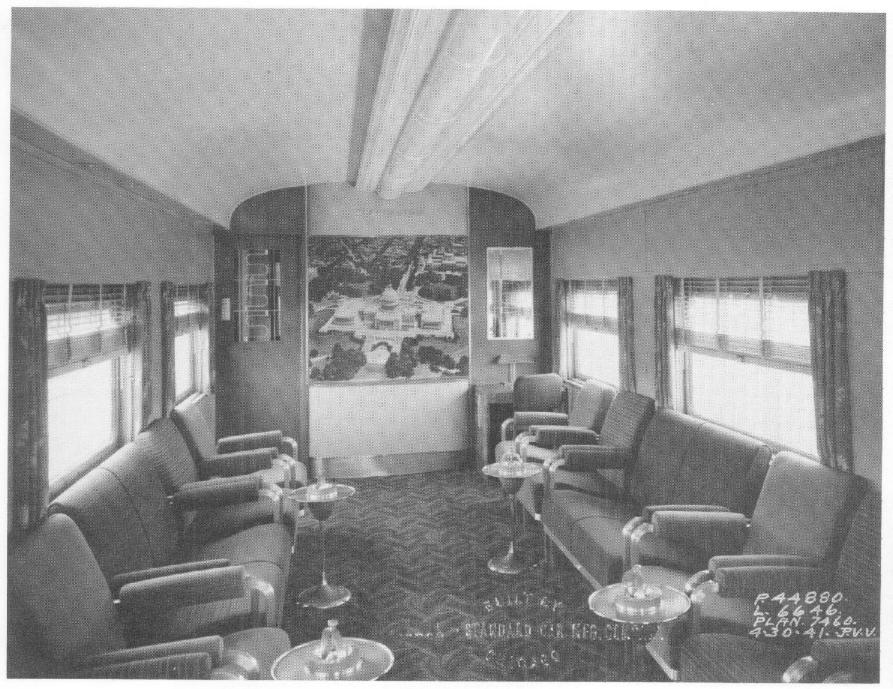 |
Phil Gosney Collection |
Pullman Standard builders photo of Lounge Room, looking forward from Observation end, in car
"Washington". Note name on upper bulkhead. |
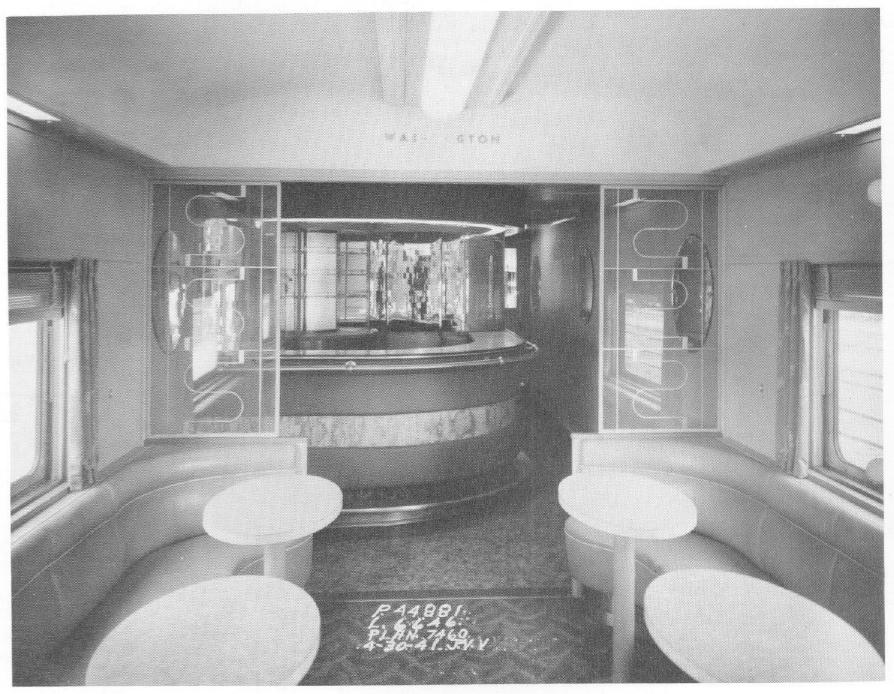 |
Phil Gosney Collection |
Pullman Standard builders photo of Tavern section of "Tavern-Observation Lounge", car "Washington"
forward portion. |
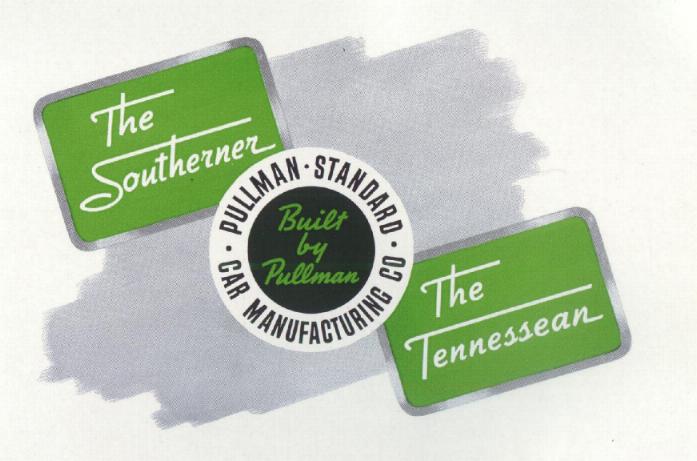 |
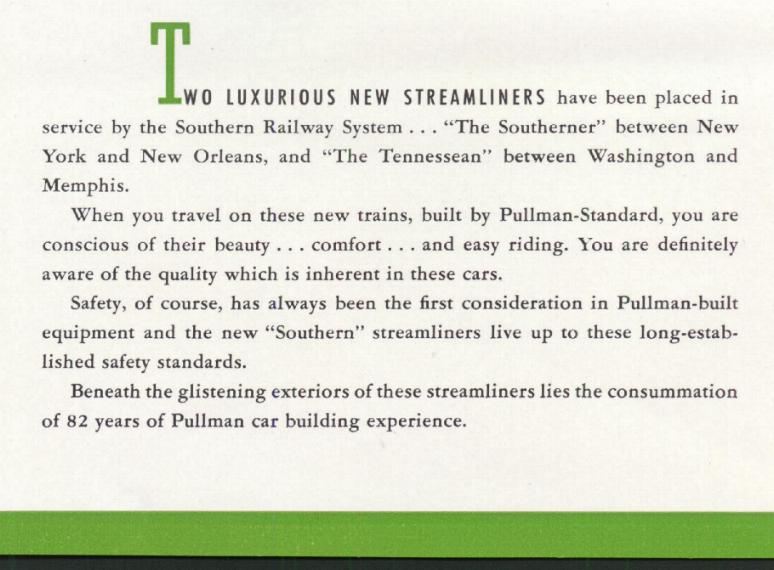 |
 |
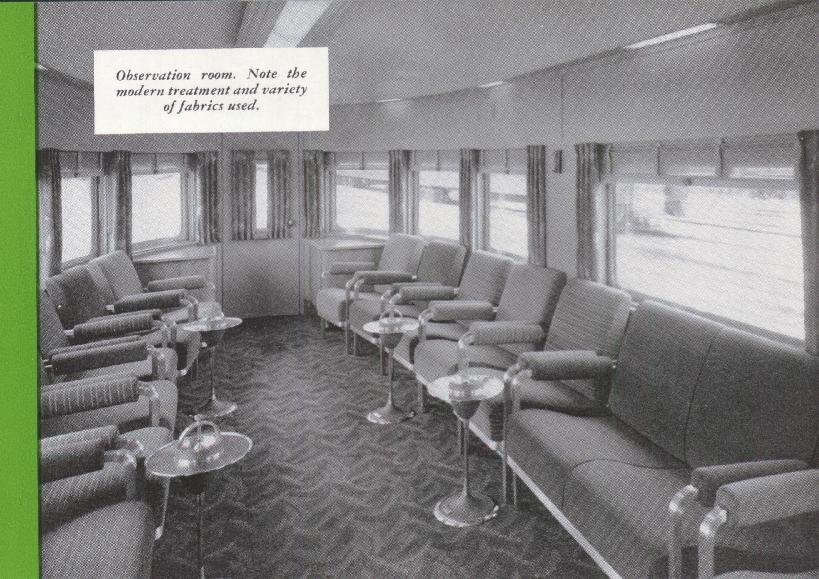 |
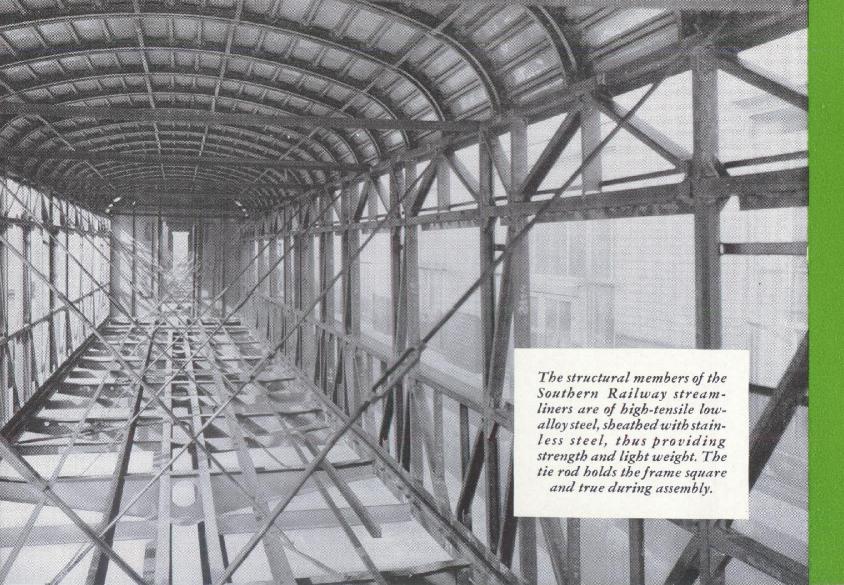 |
 |
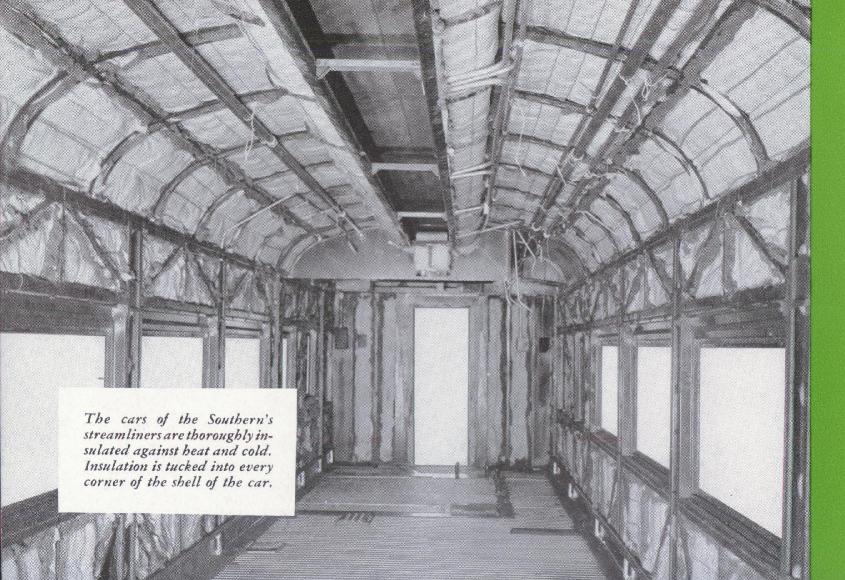 |
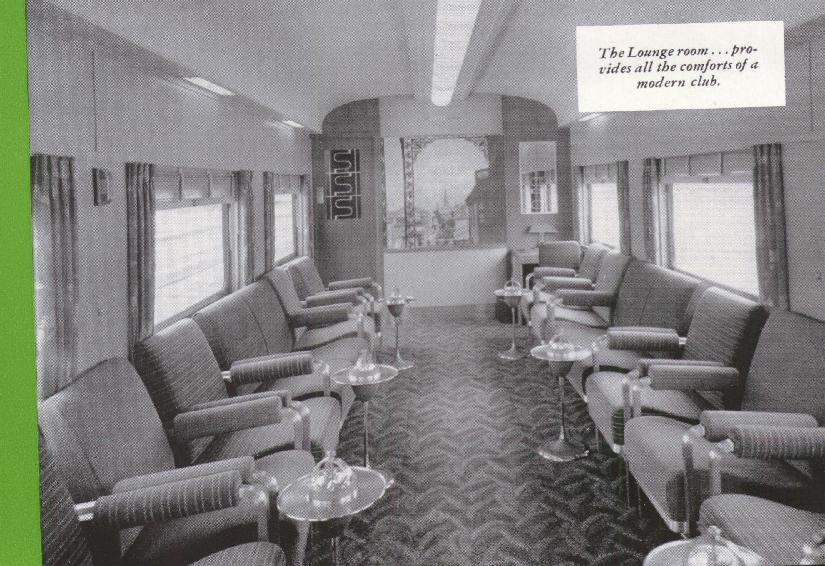 |
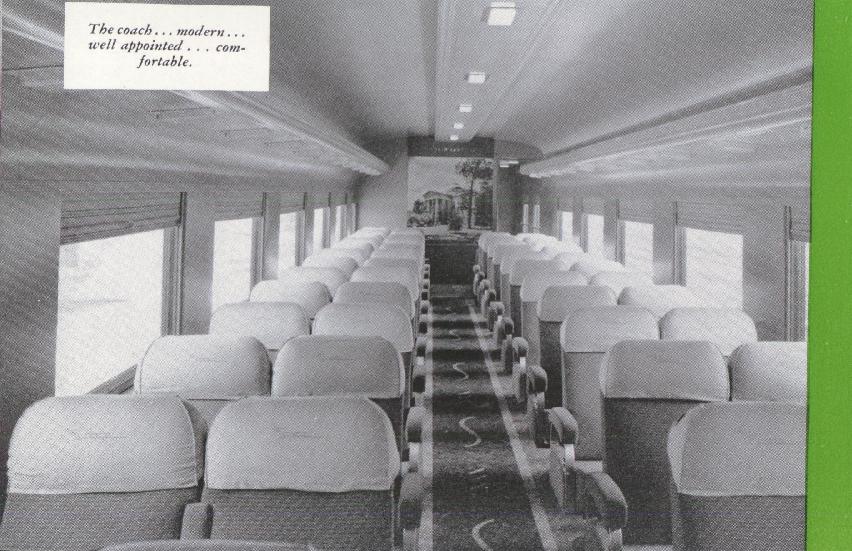 |
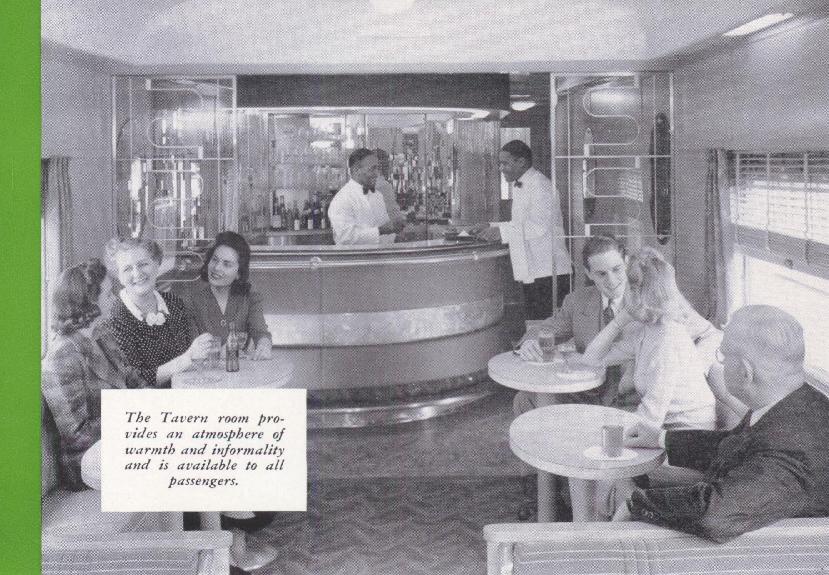 |
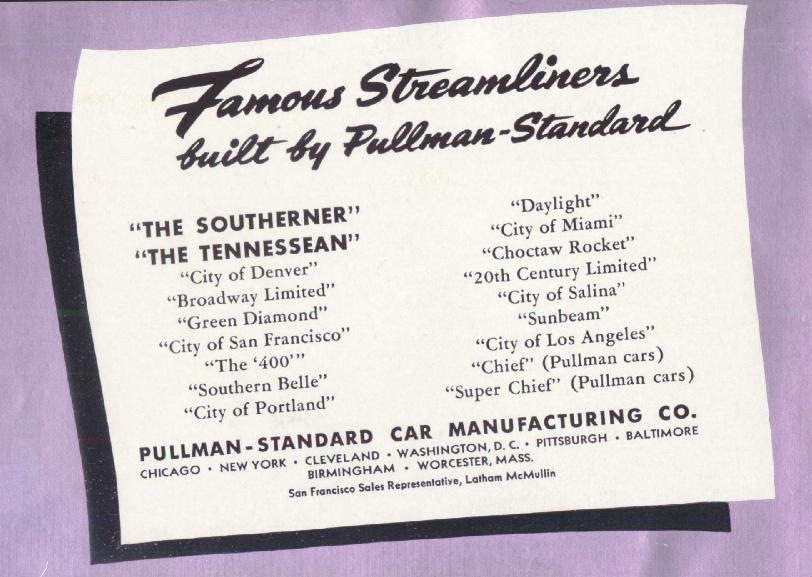 |
Phil Gosney Collection |
Brochure published by Pullman Standard covering the new equipment for The Southerner and The Tennessean. |
The Tennessean equipment assignments 1941 to 1966 Compiled by Bill Pollard Specialty Cars The initial consists for the Tennessean included a flat-end observation-tavern car operating between Washington and Memphis. This car, unlike other Southern observation cars, was flat-ended with a diaphragm to allow downline sleepers to be picked up and carried behind the observation car. The first timetables featuring the Tennessean described this car as an observation-tavern. By 1944, this car was described as an 18-seat buffet coach; in 1946-47 the description was an 18-seat observation-tavern. It is believed that this change in description was due to an order from the Office of Defense Transportation which instructed all railroads to discontinue operating full lounge cars because of capacity issues during World War II. Southern complied with this order by selling the 18 lounge car seats as coach seats, thus the revised timetable listing. Coaches
The 22-seat baggage-dorm-coach (operating Washington-Memphis) was perhaps the Tennessean’s most unique type of coach. By mid-1944, this car was designated as simply a 22-seat coach-baggage car. Additional research is needed to determine if the dorm space was actually converted to baggage, or if this change was merely a simplified timetable listing. The 22-seat coach-baggage continued to be listed in March 1964, but was absent in April 1964. This change may be due to car retirement or to a simplification of timetable consist listings. Pullman sleeping car service
Pullman service between Bristol and Memphis was initiated using 10 section-3 double bedroom heavyweight cars. Complaints about no Pullman service east/north of Bristol resulted in this car being extended to operate Washington-Memphis, effective June 23, 1941. By June 1946, this route had been extended to New York-Memphis, via the PRR north of Washington. By May 1950, the heavyweight car had been replaced by 14-4 streamlined sleepers, and this configuration was maintained until the New York-Memphis service was discontinued in May 1959. [The competing New York-Memphis through Pullman service on the PRR-L&N via Cincinnati, had been discontinued after the Summer 1956 season.] |
This page was designed and is maintained by Mike Condren. If
you have materials
that you would like to contribute, contact me at mcondren@cbu.edu